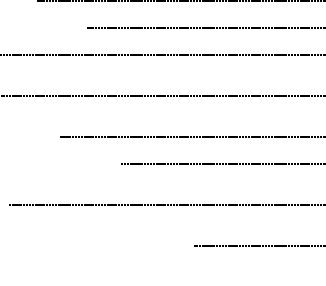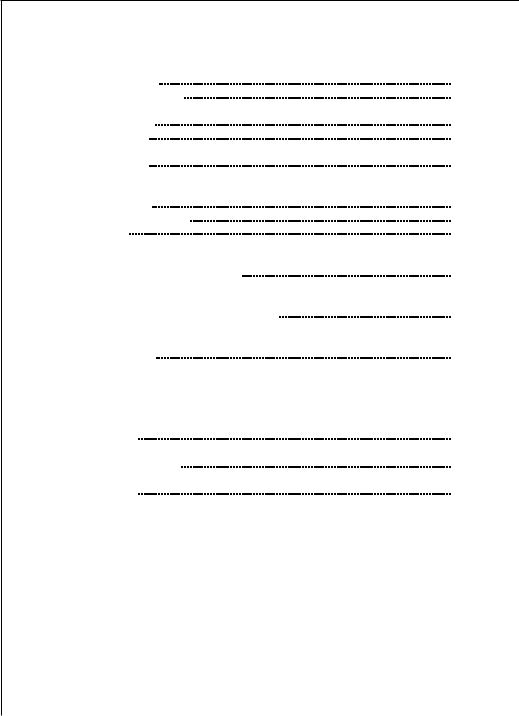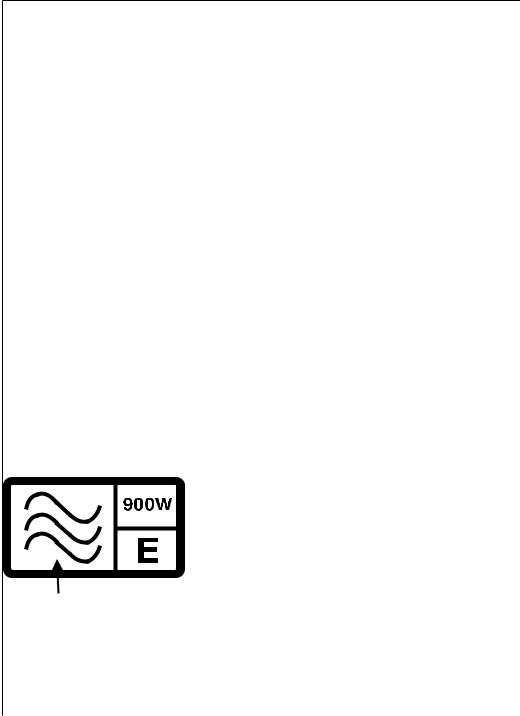AEG MC175 Manual

MC_175
ADVANCED ENGINEERING FROM GERMANY
Microwave oven
Operating instructions

AEG |
Micromat |
Dear customer,
Thank you for buying an AEG microwave oven and putting your trust in the AEG brand name.
Before using your AEG microwave oven for the first time, please read the instruction book thoroughly.
This will enable you to take advantage of all the features that the appliance offers. It will also ensure trouble-free operation and minimise unnecessary service calls.
mImportant information concerning your safety or the operation of your appliance is noted
by this symbol and/or mentions words such as «Warning», «Take care». Be sure to follow all instructions carefully.
Throughout the manual, this symbol guides you step by step when operating the appliance.
&This symbol indicates further information concerning the use of the appliance.
zThe clover indicates energy-saving tips and hints for environmentally friendly use of your appliance.
In the event of malfunctioning, please follow the instructions given in the section «What to do if.……
2

MC175 |
t |
Contents |
|
When using your microwave oven |
|
Safety Instructions |
5 |
Utensil safety |
|
Testing suitability of cookware |
6 |
Foil containers |
|
Food safety |
7 |
Unpacking |
|
Installation |
8 |
Maff Rating |
|
Connecting to the mains |
9 |
The microwave oven and accessories |
10 |
Name and function of parts |
|
Accessories |
|
Control panel |
11 |
Display window |
|
Before using your microwave oven for the first time |
12 |
Turntable installation |
|
Pause/Clear |
|
Setting the clock |
13 |
Child safety lock |
|
|
|
3

AEG Micromat
Contents
How to operate your microwave oven |
|
Microwave cooking |
14 |
Microwave setting guide |
15 |
Microwave cooking in two and three stages |
|
Manual Defrosting |
16 |
Microwave Hints |
17 |
Microwave Tips |
|
Memory Cooking |
18 |
Hold Warm |
|
Microwave and Grill cooking |
|
Auto Programmes |
19 |
Auto Programme Example |
20 |
Auto Defrost |
21 |
Oven utensils and accessories guide |
22 |
Charts |
|
Recommendations for Defrosting using 150W |
23 |
Care and cleaning |
24 |
Care and cleaning |
|
Cleaning the accessories (turntable, support and rack) |
|
Cleaning the interior |
|
Cleaning the exterior |
|
What to do if |
25 |
Service and Spare Parts |
26 |
Technical data |
26 |
4

MC175 |
t |
Safety instructions.
•WARNING : The built-in safety interlock switches prevent the microwave oven from operating when the door is open.
•WARNING : Do not tamper with the safety interlock switches, or attempt to operate the oven with the door open as open door operation can result in exposure to microwave energy.
•Do not allow food spills or cleaner residue to accumulate on door sealing surfaces. See the Cleaning and Care section for cleaning instructions.
•WARNING : It is particularly important that the oven door closes properly and that there is no damage to the: (1) door (warped), (2) hinges and latches (broken or insecure), (3) door seals and sealing surface. m If the door, hinges/latches or door seals are damaged, the microwave must not be operated until it has been repaired by a authorised service person.
mWARNING : Under no circumstance should you attempt to repair the appliance
yourself. Repairs carried out by inexperienced persons may cause injury or serious malfunctioning. Should repairs be necessary please contact your local Comet Service Centre.
•WARNING : Do not remove the outer case, door or control panel at any time. Doing so may cause exposure to extremely high voltage.
•Install or locate this oven only in accordance with ‘installation instructions’ found in this manual.
•WARNING : Use the appliance for its intended use as described in this manual. Do not use corrosive chemicals in this appliance. This type of oven is specifically designed to heat, cook, or defrost food. It is not designed for industrial or laboratory use neither for commercial use as this will invalidate the guarantee.
•WARNING : Do not operate the oven empty. If food or water is not present to absorb the microwave energy, the magnetron tube can be damaged.
•WARNING : Do not store this appliance outdoors. Do not use this product near water.
•WARNING : Do not attempt to dry clothing or newspapers in the microwave oven. These items can ignite. Do not use the cavity for storage purposes. Do not leave paper products, cooking utensils, or food in the cavity when not in use.
mWARNING : If smoke is observed, switch off or unplug the appliance and keep the door closed in order to stifle any flames. Never use water.
mWARNING : Only allow children to use the microwave, without supervision, when
adequate instructions have been given so that the child is able to use the microwave in a safe way and understand the hazards of improper use.
Utensil safety
•Most glass, glass ceramic and heat-resistant glass-ware utensils are excellent for use in the micro-wave oven. Although microwave energy will not heat most glass and ceramic items, these utensils can become hot as heat transfers from the food to the container. The use of oven gloves to remove dishes is recommended.
5

AEG |
Micromat |
Testing suitability of cookware
•All Utensils should be checked to ensure that they are suitable for use in microwave ovens.
•Place the cookware in the microwave along with a glass half full of water. Heat on Hi W(900W) (100%) for one minute. If the cookware feels hot, you should not use it. If it is just slightly warm, you can use it for reheating but not for cooking. If the dish is room temperature, it is suitable for microwave cooking.
•Paper napkins, wax paper, paper towels, plates, cups, cartons, freezer wrap and cardboard are great convenience utensils. Always be sure containers are filled with food to absorb energy and thus avoid the possibility of overheating.
•Many plastic dishes, cups, freezer containers and plastic wraps may be used in the microwave oven. Follow manufacturer’s instructions when using plastics in the oven. Avoid using plastic utensils with foods that have high fat or sugar content since these foods reach high temperatures and could melt some plastics.
•Do not leave oven unattended, and look at it from time to time when heating or cooking food in plastic, paper or other combustible containers. If smoke is observed, keep door closed, switch the oven off or disconnect oven until smoke stops.
•Metal utensils and utensils with metallic trim should not be used in the microwave oven, unless specifically recommended for microwave use.
•Containers with restricted openings, such as bottles, should not be used for microwave cooking.
•Use caution when removing a lid or cover from a dish to avoid steam burns.
Foil containers
Shallow foil containers may safely be used to reheat foods in your microwave oven providing the following rules are observed:
•Foil containers should not be more than 3 cms (1 1/4”) deep.
•Foil lids must not be used.
•The foil containers must be at least two-thirds full of food. Empty containers must never be used.
•Foil containers should be used singly in the microwave oven and should not be allowed to touch the sides. If your oven has a metal turntable or cooking rack, the foil container should be placed on an upturned oven-proof plate.
•Foil containers should never be re-used in the microwave oven.
•If the microwave oven has been in use for 15 minutes or more, allow it to cool before using it again.
•The container and turntable may become hot during use, take great care when removing either from the oven. It is advisable to use an oven cloth or glove when doing so.
•Remember when using an aluminium foil container that the reheating or cooking times may be longer than you are used to, always ensure that the food is piping hot before serving.
6

MC175 |
t |
Food safety
•Do not heat food in a can in the microwave oven. Always remove the food to a suitable container.
•Deep fat frying should not be done in the microwave oven, because the fat temperature cannot be controlled, hazardous situations can result.
•Popcorn may be prepared in the microwave oven, but only in special packages or utensils designed specifically for this purpose. This cooking operation should never be unattended.
•Pierce foods with non-porous skins or membranes to prevent steam build-up and bursting. Apples, potatoes, chicken livers, and egg yolks are examples of items that should be pierced.
•Eggs in their shell and whole hard-boiled eggs should not be heated in microwave ovens as they may explode.
m Warning : Microwave heating of beverages can result in delayed eruptive boiling,
care should be taken when handling a container with hot liquid inside.
•WARNING : The contents of feeding bottles and baby food jars are to be stirred or shaken and the temperature is to be checked before consumption, in order to avoid burns. When heating liquids, e.g. soups, sauces and beverages in your microwave oven, overheating the liquid beyond boiling point can occur without evidence of bubbling. This could result in a sudden boil over of the hot liquid. To prevent this possibility the following steps should be taken:
1.Avoid using straight-sided containers with narrow necks.
2.Do not overheat.
3.Stir the liquid before placing the container in the oven and again halfway through the heating time.
4.After heating, allow to stand in the oven for a short time, stirring again before carefully removing the container. Some products such as whole eggs and sealed containers – for example, closed glass jars – may explode and should not be heated in this oven.
Occasionally, poached eggs may explode during cooking. Always pierce the yolk, then cover and allow the standing time of one minute before removing cover.
Keep these instructions!
Unpacking
N.B. When you unpack the oven, check that the product is free from damage. Damage or any missing parts must be reported immediately to the retailer. The oven, parts of the oven or the accessories may be wrapped by a protection foil. If so, you must remove this foil before using the oven. Do not leave packing material so that small children can play with it. This can be hazardous.
7

AEG |
Micromat |
Installation
1.Remove any promotion label from the door.
2.The oven should be installed on a flat, level surface. The surface must be strong enough to safely bear the weight (18 kg) of the oven, and the contents. To avoid the possibility of causing vibration or noise the oven must be in a stable position.
3.Keep the oven away from heat and water. Exposure to heat and water can lower oven efficiency and lead to malfunctioning, so be sure to install the oven away from heat and water sources.
4.Do not block air vents on the top and the sides of the cabinet and also do not place any articles on the top of the oven. If air vents are blocked during operation, the oven may overheat, and this may lead to malfunctioning. Hot air escapes from the vents, so be sure not to obstruct it or let curtains come between the oven and the rear wall.
5.Place the oven as far away from radios and TV’s as possible. This oven does conform to EEC requirements of radio interference suppression, but some interference may occur if it is placed too close to a radio or TV, so keep them as far apart as possible.
6.If positioned in a corner, leave a gap of at least 5 cm from the walls and 5 cm above the microwave.
mIMPORTANT! The oven can be placed almost anywhere in the kitchen. Make sure
the oven is placed on a flat, level surface and that vents as well as the surface underneath the oven are not blocked (for sufficient ventilation).
MAFF RATING
Explanation of the heating category label for microwave ovens and small packs of food (up to 500g / 1 lb, typical of ready meals for 1 or 2 people) as agreed by MAFF (the Ministry of Agriculture Fisheries and Food) in conjunction with food and Microwave Oven manufacturers.
Power Rating in
Watts.
Heating Category.
Microwave Symbol
•Always follow food manufacturers instructions when cooking ready meals.
•Always ensure that food is piping hot before serving.
N.B. The higher the power output and heating category of the microwave oven, the less heating time is required.
8

MC175 |
t |
Connecting to the mains
The oven is delivered with the power cord and a plug for 230–240 V, 50Hz, earthed socket outlet. Earth protection minimises the risks should a short circuit occur. Check to ensure the voltage of the oven matches the supply.
N.B. If the oven is connected to the socket via an extension cord, make sure the cord is earthed.
mThis appliance must not be used on a non-earth protected power supply.
Contact an electrician if you are uncertain regarding electrical connection of the oven or provision of earth protection of the supply.
mThis appliance must be earthed. If this appliance is fitted with a non-
rewireable plug for which your socket is unsuitable, the plug should be cut off and the appropriate plug fitted. If it is necessary to change the fuse in a nonrewireable plug, the fuse cover must be refitted. If the fuse cover is lost or damaged, the plug must not be used until a replacement is obtained.
IMPORTANT
The wires in the mains lead are coloured in accordance with the following code:
GREEN AND YELLOW |
EARTH |
BLUE |
NEUTRAL |
BROWN |
LIVE |
If you fit your own plug, the colours of the wires in the mains lead of your appliance may not correspond with the markings identifying the terminals in your plug, proceed as follows:
GREEN & YELLOW
E
|
13 A |
N |
L |
|

 BROWN
BROWN
BLUE
|
|
CORD CLAMP |
P1041 |
|
|
|
|
•Connect the green and yellow (earth) wire to the terminal in the plug which is marked with the letter ”E” or the earth symbol ( ) or coloured green and yellow.
) or coloured green and yellow.
•Connect the blue (neutral) wire to the terminal in the plug which is marked with the letter ”N” or coloured black.
•Connect the brown (live) wire to the terminal in the plug which is marked with the letter ”L” or coloured red.
9
